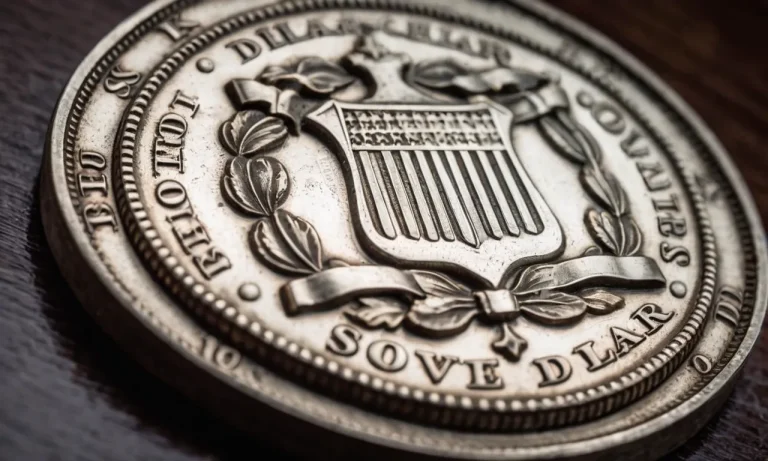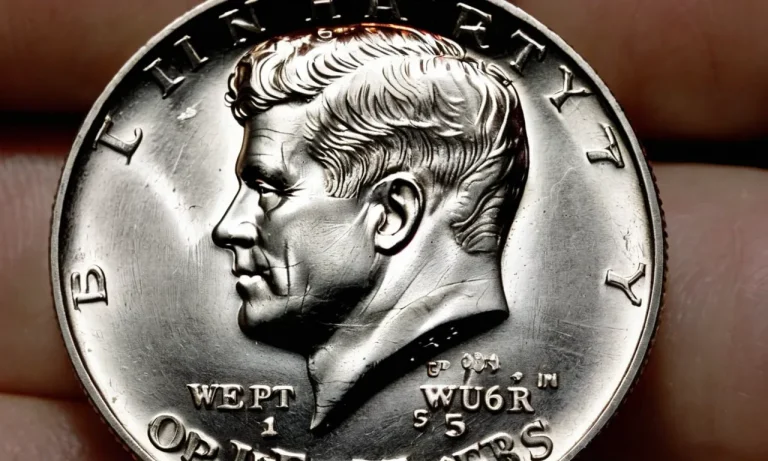Why should we keep the penny? The fate of the penny has been debated for years. With inflation on the rise, is it still worthwhile for the United States to continue minting pennies?
If you’re short on time, here’s a quick answer: Yes, we should keep the penny because it provides crucial rounding functionality to cash transactions, retains cultural and historical significance, and costs little for the Federal Reserve to produce.
In this article, we will analyze both sides of the penny debate in detail. We’ll overview the origins of the penny, its current production costs, and the common arguments around retaining or eliminating the coin.
We’ll also highlight unique considerations around pennies, like collectors, nonprofits, and the role of coin lobbyists in the decision-making process.
The Origins and History Behind the Penny
How the Penny Came to Be
The origins of the penny can be traced back to the early days of the United States. In 1786, the Founding Fathers of the country authorized a monetary system based on the dollar. The dollar was divided into 100 cents as the main subunit.
The first official one-cent coin, which later came to be known as the penny, was minted in 1793.
The word “cent” was derived from the Latin word “centum” meaning 100, while the word “penny” has its origins in medieval England where coins of small denominations were minted from silver. Over time, as the intrinsic value of coins decreased, cheaper metals like copper and zinc came into use.
The early American pennies were made of pure copper and were much larger compared to today’s pennies. In 1857, the penny shrank in size but was still made of copper. Pennies have since gone through several redesigns and metal compositions, but they continue to retain their status as the lowest denomination coin of United States currency.
Key Events in Penny History
- In 1793 – The first cent was minted from the new Philadelphia Mint.
- In 1859 – The Indian Head Cent designed by James Longacre was issued.
- In 1864 – Due to copper shortages during the Civil War, the bronze Indian Head cent was issued.
- In 1909 – The Lincoln Wheat Cent was introduced to commemorate Abraham Lincoln’s 100th birthday. This iconic “penny” design is still used today after over 100 years.
- In 1943 – Steel planchets temporarily replaced copper due to World War II which led to a gray colored penny often called “steelies.”
- In 1962 – The composition was changed to 95% copper and 5% zinc instead of the previous bronze alloy.
- In 1983 – The composition changed again to 97.5% zinc with a copper plating. This has been the current metal composition since then.
So while the design and metal mixtures have evolved over the years, the penny has been an integral part of American currency for over 200 years! It will be interesting to see if it continues to adapt to future changes or keeps up its staying power.
The Costs of Producing Pennies
Minting Expenses Breakdown
The costs of producing pennies have escalated over the years. According to the U.S. Mint’s most recent annual report, it now costs over 2 cents to make one penny due to the rising prices of zinc and copper. Here’s a breakdown of the minting expenses:
- Raw Materials – 1.9 cents per penny
- Transportation – 0.11 cents per penny
- Manufacturing – 0.18 cents per penny
In other words, the government spends almost twice as much to produce each penny than the penny’s actual face value. Given that the U.S. Mint produced over 7.4 billion pennies in 2021, the total loss just for minting pennies was estimated at $70 million.
Comparisons to Other Denominations
Comparatively, the production costs for other coins are significantly lower:
| Denomination | Unit Cost to Produce |
| Penny | 2 cents |
| Nickel | 8.52 cents |
| Dime | 3.65 cents |
| Quarter | 7.42 cents |
While the quarter has a higher minting price tag than the dime, it remains significantly lower than the cost to manufacture a penny.
Some economists argue that pennies should be eliminated since they cost almost twice their face value to produce and are cumbersome to use. However, others counter that eliminating the penny could lead to small inflationary effects on the economy.
The debate continues on whether the pros outweigh the cons when it comes to keeping the penny.
The Case for Eliminating Pennies
Inconvenient and Impractical
Pennies take up space, weigh down pockets and purses, and cause general annoyance in daily transactions. Studies show that 58% of people see pennies as a nuisance. Carrying substantial amounts of pennies is inconvenient compared to folding paper bills.
Pennies also slow down cash transactions, with people fumbling to locate them. This collectively costs billions in lost productivity. There are better uses for the space pennies take up, like holding more convenient change or paper bills.
Costs Outweigh Benefits for Taxpayers
It costs approximately 2 cents to produce one penny due to the rising costs of zinc and copper. This leads to an estimated annual loss of $100 million to taxpayers. The raw materials in pennies alone are not worth the trouble of keeping them in circulation.
Transaction costs also outweigh the penny’s 1-cent face value. Pennies do enable getting exact change, but multiple studies show rounding for cash payments does not disproportionately affect any particular group.
At least 50 other countries have successfully phased out low-denomination coins already.
Environmental Impact of Zinc Mining
The zinc mining required to supply pennies poses environmental hazards. Mining zinc releases sulfur dioxide leading to acid rain contamination. Extracting metals also requires large amounts of energy and water resources. Old pennies in landfills can lead seep toxic compounds into groundwater.
Recycling pennies is energy intensive as well. Studies show metal mining tailings may contain dangerous levels of radioactive elements. Eliminating pennies would curb these impacts and set an example for smarter resource usage.
The raw materials for U.S. penny production could be redirected to build infrastructure or strategic resources instead.
The Case for Keeping Pennies
Essential Role in Cash Transactions
Pennies play an important role in cash transactions, allowing prices and change amounts to be precisely represented. According to the Americans for Common Cents non-profit, rounding cash transactions to the nearest 5 cents could result in a loss of $600 million for consumers each year.
The penny allows exact change, which is essential for businesses, charities, and people on tight budgets.
Cultural and Historical Significance
The penny has been part of American commerce and culture for over 200 years. It features important American historical figures like Abraham Lincoln and monuments like the Lincoln Memorial. Eliminating the penny could be seen as turning our back on an iconic part of our nation’s history.
The penny also brings back fond memories for many Americans who grew up saving pennies in jars or looking for lucky pennies. There is cultural and nostalgic value in preserving it.
Minimal Budget Impact
Despite common belief, eliminating pennies would have a minimal impact on the federal budget. The U.S. Mint spends 2 cents to make each penny, resulting in a loss. However, the overall cost of around $100 million per year is only a tiny fraction of the federal budget.
In fact, using steel instead of copper could make the penny cost efficient again. Canada has used steel pennies coated in copper for years due to the cost savings. Preserving pennies is more about their practical and intangible value.
The Role of Coin Lobbyists and Special Interests
The debate around keeping or eliminating the penny has attracted significant attention and lobbying from special interest groups on both sides. The main trade organization advocating for the continued production of pennies is Americans for Common Cents (ACC).
Founded in 1990, ACC has engaged in widespread lobbying and public campaigns arguing that the penny plays an important economic, charitable, and cultural role.
Some of ACC’s key arguments include:
- Eliminating the penny could lead to inflationary rounding, where merchants rounded purchases up to the nearest 5 cents, effectively creating a hidden tax on consumers
- Pennies facilitate charitable donations and allow more precise pricing options for goods and services
- Pennies represent cultural and historical American values like thriftiness and prudence
ACC is funded mainly by companies and organizations that have a significant vested interest in penny production, including coin metal suppliers like Jarden Zinc Products and the printing and shipping companies that facilitate penny circulation like Cummins Allison and Brinks Incorporated.
Critics like economist Robert Whaples have argued the self-interest behind ACC’s lobbying distorts the debate around the costs and benefits of the penny.
On the other side, groups like Citizens to Retire the U.S. Penny and the U.S. Currency Education Program have pushed for ceasing penny production. They argue that the costs of producing pennies now outweigh their economic utility and that alternative solutions like rounding can address concerns over pricing effects.
However, their lobbying and influence has so far been overmatched by ACC and the powerful penny production lobby.
In many ways, the debate over the penny’s future has become more centered on the symbolic roles pennies play and the political influence of special interests like ACC than just strict economic cost-benefit analyses.
The continued deadlock and yearly multimillion-dollar production costs highlight the power these influential lobby groups wield over what might otherwise be a straightforward discussion about the penny’s merits or lack thereof.
Public Opinion Polling on Pennies
Public opinion on keeping the penny in circulation is mixed, according to several polls conducted over the past decade. While some surveys have found majority support for eliminating the one-cent coin, others reveal more nuanced views.
Polls Showing Majority Support for Penny Phase-Out
A 2012 national poll by Lincoln Park Strategies found that 58% of Americans supported discontinuing penny production, while just 33% wanted to keep it. The survey asked, “If you had to vote on it today, would you vote to keep making pennies, or vote to stop making them?”
Similarly, a 2014 YouGov poll discovered that 55% of respondents favored eliminating pennies, citing their lack of usefulness and the cost to produce them. However, an almost equal number – 53% – said they would be sorry to see pennies go.
Surveys Revealing Complex Opinions
While the polls above show majority support for a penny phase-out, other surveys have found more nuanced views among Americans:
- A Coinstar national survey in 2019 found that even though 66% believed pennies were bothersome and created clutter, 61% wanted to keep them for tradition and nostalgia.
- A TD Bank survey in 2012 uncovered public misconceptions – 75% greatly overestimated the annual cost of making pennies. When given the real number, almost half changed their mind to support keeping pennies.
- An Associated Press poll in 2014 determined that while 4 in 10 people supported eliminating pennies, an equal number were strongly opposed. The deciding factor for most was convenience – whether transitioning to exact change would be problematic.
Why Should We Keep The Penny – Conclusion
In conclusion, upon weighing both sides of the debate, there are compelling reasons why we should continue producing pennies in the United States.
While pennies can seem outdated, inconvenient, or a drain on taxpayer budgets, they still serve a vital and practical transactional purpose day-to-day. The loss of rounding functionality could disproportionately impact certain demographics.
And relative to other coins, pennies make up a small fraction of overall U.S. currency production expenses.






